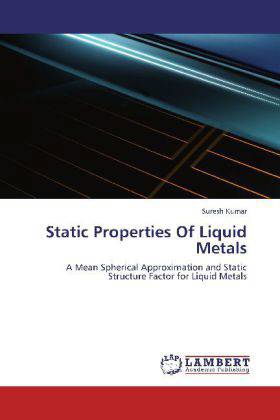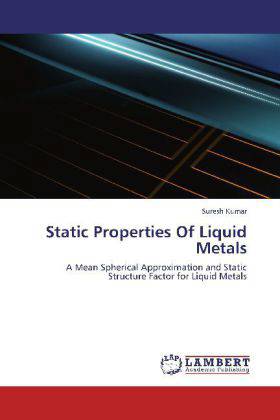
- Afhalen na 1 uur in een winkel met voorraad
- Gratis thuislevering in België vanaf € 30
- Ruim aanbod met 7 miljoen producten
- Afhalen na 1 uur in een winkel met voorraad
- Gratis thuislevering in België vanaf € 30
- Ruim aanbod met 7 miljoen producten
Zoeken
Static Properties Of Liquid Metals
A Mean Spherical Approximation and Static Structure Factor for Liquid Metals
Suresh Kumar
Paperback | Engels
€ 58,95
+ 117 punten
Omschrijving
One of the most important quantities characterizing a liquid metal is the static structure factor, S(k), i.e., the Fourier transforms of the pair correlation function g(r). A detailed knowledge of this quantity is essential for a quantitative understanding not only of the structure of fluid but also of numerous other properties of liquid metals and their alloys. There is an increasing need for understanding the various properties of metals, oxides and salts in the liquid state, because of their important role in metallurgical processes. The main problem in studying the properties of liquid metals is the non-availability of the exact interatomic potential. There are great uncertainties associated with the ab initio calculations of liquid metal interactions. Thus, although we can borrow the techniques of classical statistical mechanics, up to some extent, but unsure of the potential to which they are to be applied. The objective of this work is to determine the static structure factor for some liquid metals described in the long-wavelength limit and then its corresponding structure factor.
Specificaties
Betrokkenen
- Auteur(s):
- Uitgeverij:
Inhoud
- Aantal bladzijden:
- 76
- Taal:
- Engels
Eigenschappen
- Productcode (EAN):
- 9783659115844
- Verschijningsdatum:
- 4/05/2012
- Uitvoering:
- Paperback
- Afmetingen:
- 152 mm x 220 mm
- Gewicht:
- 122 g

Alleen bij Standaard Boekhandel
+ 117 punten op je klantenkaart van Standaard Boekhandel
Beoordelingen
We publiceren alleen reviews die voldoen aan de voorwaarden voor reviews. Bekijk onze voorwaarden voor reviews.








